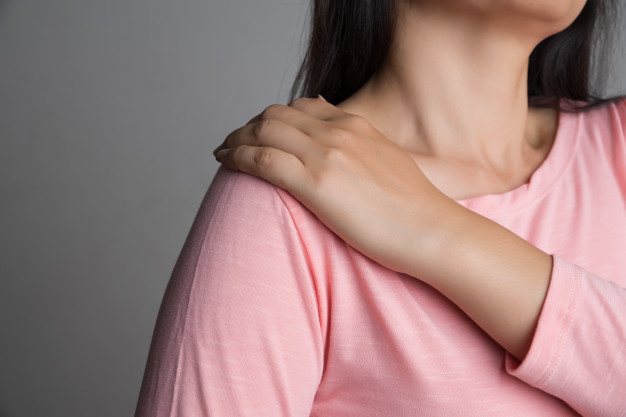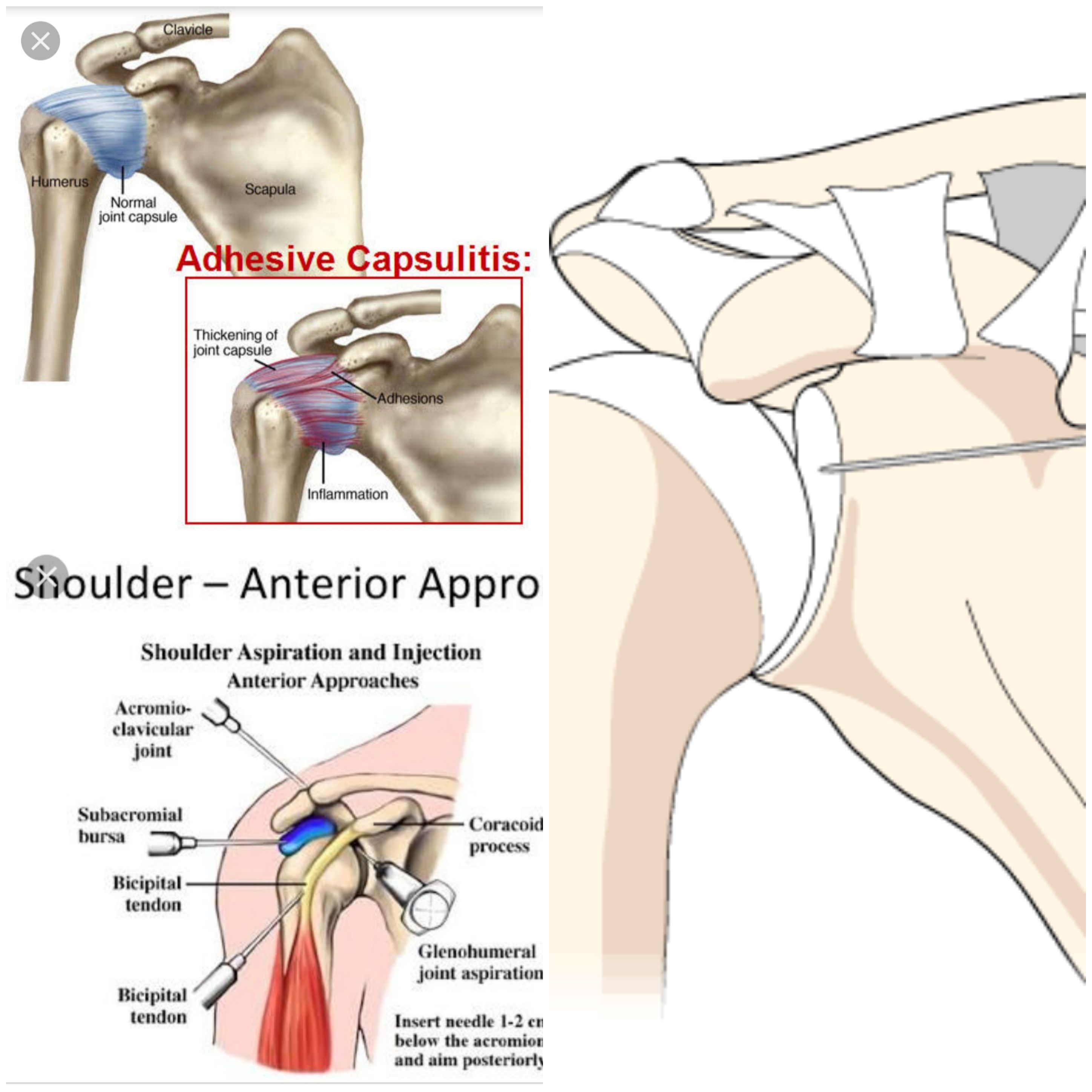Shoulder Pain
Your shoulders each have two joints, making them the most flexible parts of your body. The main shoulder joint the glenohumeral is a ball and socket joint. Its called this because the top of the upper arm bone the humerus is shaped like a ball. This ball fits into the shoulder blade bone, which acts as the socket, giving your shoulder a wide range of movement. But, the shoulder socket is very small, compared to other ball-and-socket joints, such as the hip. Its held together and controlled by a covering of muscles, which are secured to the bones by strong cords called tendons. These muscles and tendons form a capsule around the joint and support its movements, but can make it more likely to dislocate than other joints. Inside the capsule is the synovium, which produces fluid that lubricates the joint and keeps the cartilage healthy. The cartilage helps protect your bones from any impact and sits between the bones of your shoulder joints to stop them rubbing together. Above the main shoulder joint there is a smaller joint where the top of the shoulder blade the acromion meets the collar bone. This is known as the acromioclavicular joint. It helps the larger joint below to move through its full range, particularly when you are raising your arm, lifting or throwing.

Contributory Factors
Factors contributing to shoulder pain include subluxation, contractures, complex regional pain syndrome (CRPS), rotator cuff injury, and spastic muscle imbalance of the glenohumeral joint. History of trauma, arthritis, diabetes mellitus (may cause adhesive capsulitis), repetitive stress to shoulder joint.

.jpg)
Causes
Several factors and conditions can contribute to shoulder pain. The most prevalent cause is rotator cuff tendinitis. This is a condition characterized by swollen tendons. Another common cause of shoulder pain is impingement syndrome where the rotator cuff gets caught between the acromion (part of the scapula that covers the ball) and humeral head (the ball portion of the humerus). Sometimes shoulder pain is the result of injury to another location in your body, usually the neck or biceps. This is known as referred pain. Referred pain generally doesnít get worse when you move your shoulder.
Other causes of shoulder pain include:
- arthritis
- torn cartilage
- torn rotator cuff
- swollen bursa sacs or tendons
- bone spurs (bony projections that develop along the edges of bones)
- pinched nerve in the neck or shoulder
- broken shoulder or arm bone
- frozen shoulder
- dislocated shoulder
- injury due to overuse or repetitive use
- spinal cord injury
- heart attack
Investigation
Imaging tests, such as an X-ray or MRI, can produce detailed pictures of your shoulder to help with the diagnosis.
Treatment
- Rest your shoulder: Avoid doing any activities that strain your shoulder, such as raising your arm overhead or reaching behind you. In general, try to keep your arm down, close to, and in front of your body. But you can move your shoulder gently if you need to.
- Ice your shoulder: Put a cold gel pack, bag of ice, on the injured area every 1 to 2 hours, for 15 minutes each time, as needed. Put a thin towel between the ice or other cold object and your skin.
- Take medicine to reduce the pain and swelling: Your doctor or nurse might recommend that you take ibuprofen or naproxen or a muscle relaxant.
- Different exercises can help your shoulder feel better. Ask your doctor or nurse which exercises you should do, when to start them, and how often to do them. If you have sharp or tearing pain, stop what you are doing and let your doctor or nurse know.
- Intrarticular Steroid block: Healthcare providers sometimes suggest injections of medications called glucocorticoids, known commonly as steroids, directly into the shoulder, beneath a bone called the acromion or intraarticularly or over a tendon under ultrasound guidance.
- Prolotherapy or PRP therapy
- Some tears, especially large tears, might need to be treated with surgery.
Types of Pain
- Neck Pain
- Low Back Pain
- Thoracic Spine Pain
- Headache
- Shoulder Pain
- Elbow Pain
- Wrist Pain
- Knee Pain
- Peripheral Vascular Disease
- Neuropathic Pain Syndromes
- Fibromyalgia And Other Myofacial Pain Syndromes
- Chronic Regional Pain Syndrome
- Facial Pain
- Foot Pain
- Abdominal Wall Pain Syndrome
- Sacroiliac Joint Pain
- Cancer Pain
- Urogenital Pain Syndrome
- Chronic Pelvic Pain